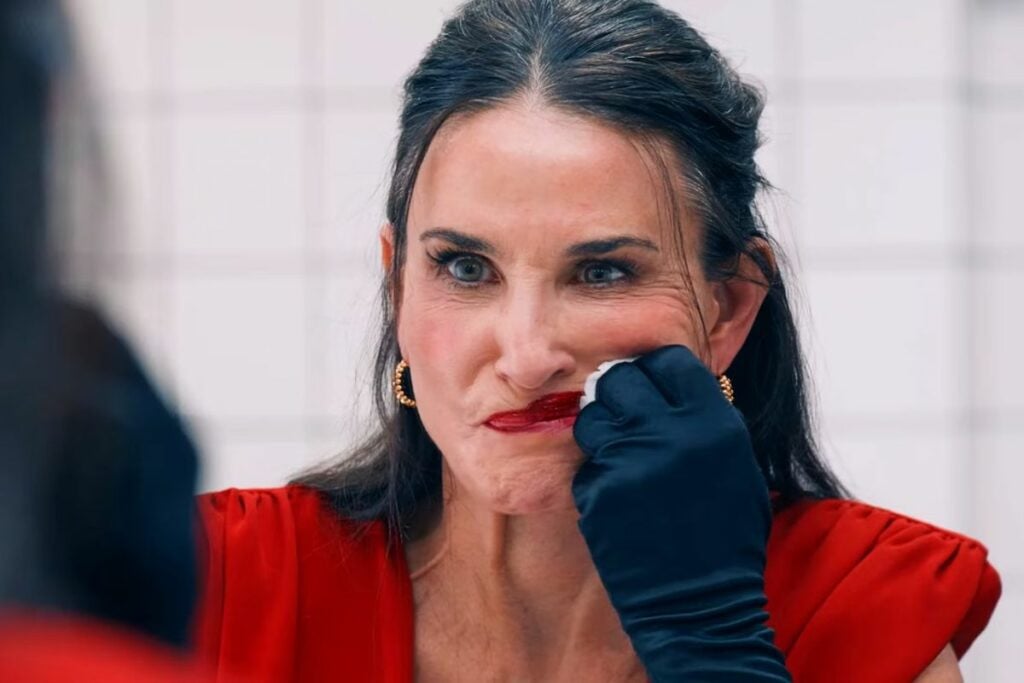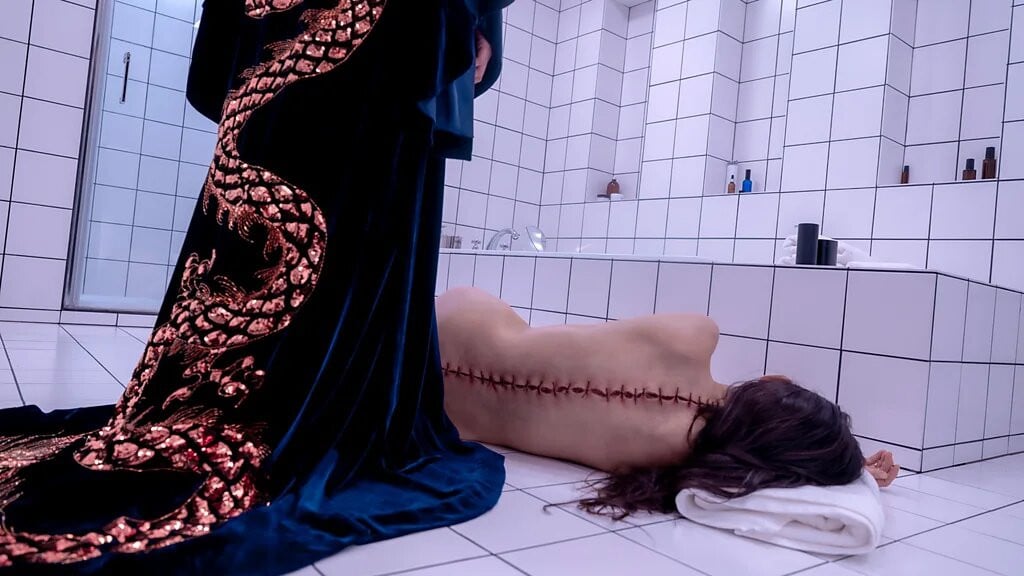In "The Substance," Coralie Fargeat’s lavishly gruesome film, beauty standards and aging are explored through an unflinchingly grotesque lens. The movie follows Elisabeth (Demi Moore), a 50-year-old aerobics instructor, who is deemed too old for television by executives. When a mysterious beauty product called “The Substance” offers a chance to reclaim youth and beauty, Elisabeth’s world takes a horrifying turn.
The film’s approach is audacious, mixing body horror with satire to comment on the dangers of society's obsession with youth and beauty.
"The Substance" has generated polarized reactions from critics. Some praise its bold commentary on the superficiality of the beauty industry, with its graphic, blood-soaked depictions serving as a metaphor for the damage done by society’s fixation on physical appearance.
Others, however, have accused the film of leaning too heavily into misogyny, with its explicit focus on female bodies and the objectification of women.

Mubi
Fargeat’s direction recalls other body horror films that mix gore with sharp social critique, like Titane (2021) and Death Becomes Her (1992), while tapping into fears that have long plagued Hollywood. The film opens with Elisabeth being replaced by a younger, more beautiful version of herself, produced through the magical intervention of “The Substance.”

Mubi
This catalyst for the film’s horror begins as a dark critique of the pressures placed on women to remain youthful but eventually morphs into a disturbing exploration of identity and control.
Fargeat’s signature style shines here, especially in her ability to take a straightforward theme—fear of aging—and inject it with a heavy dose of grotesque, surreal horror. The result is a film that might make you look at your reflection in a new light—and perhaps question the societal expectations that fuel our obsession with age and beauty.

Mubi
Is it a feminist triumph or a misogynistic portrayal of aging? The answer isn’t simple, but it’s sure to spark heated discussions. Demi Moore’s portrayal of Elisabeth strips away any glamor, revealing a raw, desperate woman clinging to her relevance in an unforgiving world. Margaret Qualley also gives a strong performance as the younger replacement, Sue, whose rise brings her into conflict with Elisabeth in an eerie, body-swapping spectacle.
Fargeat’s film continues to blur the lines between horror and social commentary. While some critics argue that the gore overshadows the meaningful message, the visceral imagery forces the audience to confront their own complicity in perpetuating unrealistic beauty standards. The film’s final scenes shift the focus from shock to revelation, holding a mirror up to both the characters and the viewers.

IMDb
One thing is clear: The Substance is destined to be a movie people will talk about for a long time. Whether it’s a feminist statement, a shallow exploration of aging, or somewhere in between, Fargeat’s boldness has already made waves, ensuring its place in future cinematic discussions.









COMMENTS
Comments are moderated and generally will be posted if they are on-topic and not abusive.
For more information, please see our Comments FAQ